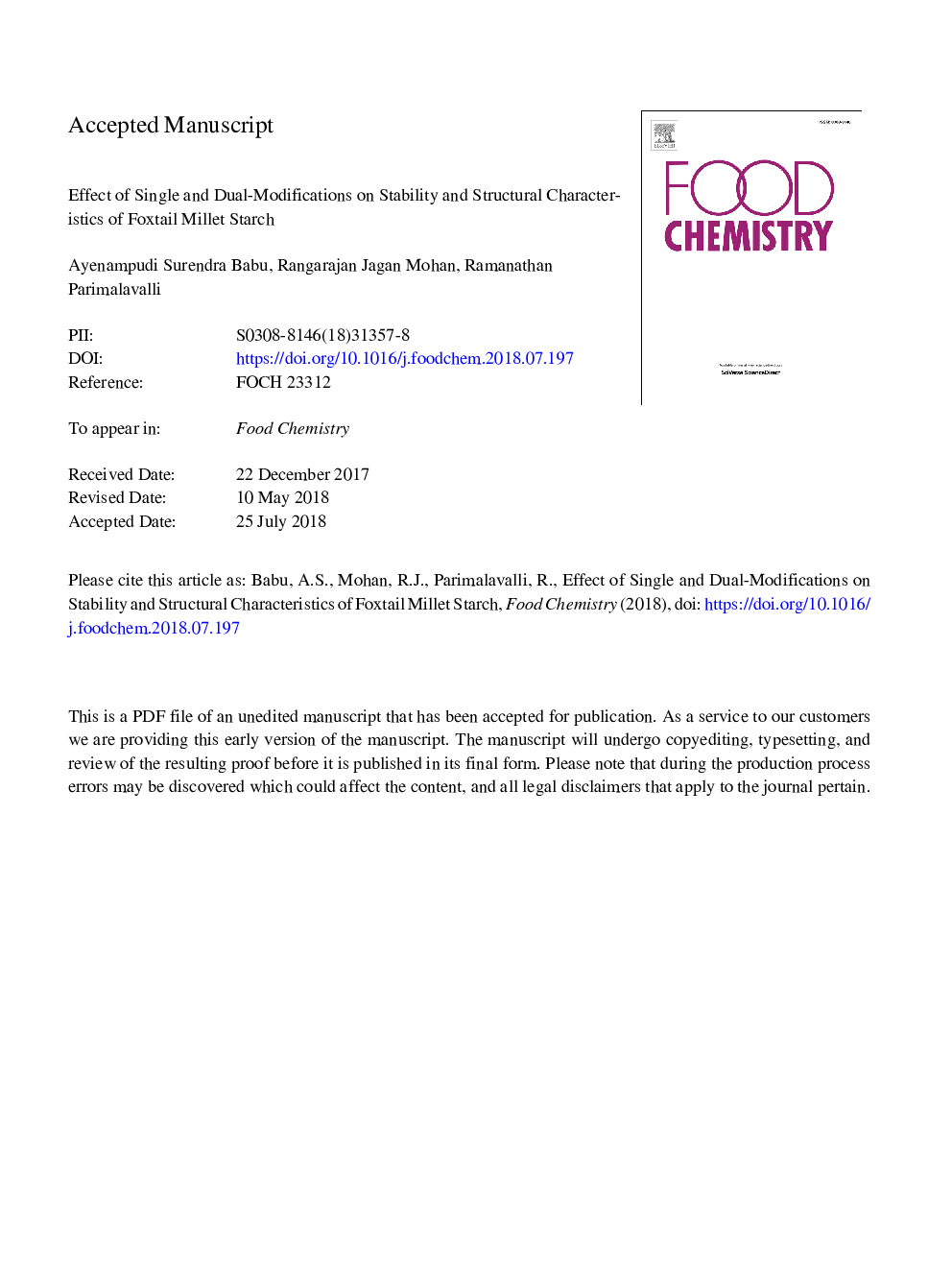| Article ID | Journal | Published Year | Pages | File Type |
|---|---|---|---|---|
| 7583944 | Food Chemistry | 2019 | 38 Pages |
Abstract
Foxtail millet starch was modified by annealing (AS), ultra-sonication (US) and a combination of the two treatments (annealing and ultra-sonication (AUS) or ultra-sonication and annealing (UAS)) and they were characterized. Compared to the native starch (NS), modified starches particularly UAS contained the highest amylose (27.96%). Ultra-sonication prior to annealing had a predominant effect on resistant starch (RS) level (UAS-45.59%). Among the modified starches, UAS had exhibited superior resistance to acidic (0.94) and shear (0.68) stability. Sonication, when used as the second treatment (AUS) elevated the final viscosity compared to its counter ones possibly due to the effects of cavitation promoted by sonication treatment. UAS had showed an A-type diffraction pattern and dominant peaks in FT-IR spectra. It can be inferred that dual modification of starch by ultra-sonication followed by annealing had exhibited the most desirable properties such as high acid and shear resistance, high freeze-thaw stability and improved gel texture.
Related Topics
Physical Sciences and Engineering
Chemistry
Analytical Chemistry
Authors
Ayenampudi Surendra Babu, Rangarajan Jagan Mohan, Ramanathan Parimalavalli,
